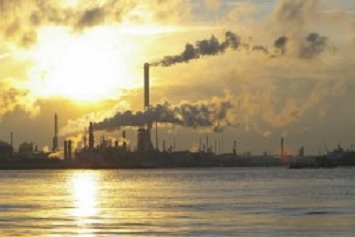The EPA is requesting public comments on its Draft Inventory of U.S. Greenhouse Gas Emissions and Sinks: 1990–2015. The Draft Inventory contains estimates of U.S. emissions of carbon dioxide (CO2), methane (CH4), nitrous oxide (N2O), hydrofluorocarbons (HFCs), perfluorocarbons (PFCs), sulfur hexafluoride (SF6), and nitrogen trifluoride (NF3) emissions.
 |
The final inventory report will fulfill the U.S. commitment under the United Nations Framework Convention on Climate Change (UNFCCC) to periodically develop and submit national greenhouse gas (GHG) inventories. The Draft Inventory adheres to a comprehensive and detailed set of methodologies for estimating sources and sinks of anthropogenic GHGs, says the EPA. All parties to the UNFCCC are required to use the same methods to calculate emissions and sinks to ensure that all inventories are comparable.
The EPA notes that data it collects under its GHG Reporting Program (GHGRP) complement and continue to be an important resource for the Draft Inventory, “providing not only annual emissions information, but also other annual information, such as activity data and emissions factors that can improve and refine national emission estimates and trends over time.”
Fossil Fuel Combustion Down
The Draft Inventory states that in 2015, total gross U.S. GHG emissions were 6,586.2 million metric tons (MMT) of CO2 equivalent (CO2e), a 3.4 percent increase over 1990. However, from 2014 to 2015, emissions decreased by 2.2 percent (150.1 MMT CO2e).
According to the EPA, the decrease in total GHG emissions between 2014 and 2015 was driven in large part by a decrease in CO2 emissions from fossil fuel combustion. That decrease, in turn, was brought on by multiple factors, including substitution from coal to natural gas consumption in the electric power sector; warmer winter conditions in the first quarter of 2015 resulting in a decreased demand for heating fuel in the residential and commercial sectors; and a slight decrease in electricity demand.
Statistical Highlights
Following are additional findings reported in the Draft Inventory:
- Since 1990, U.S. emissions have increased at an average annual rate of 0.2 percent.
- Overall, net emissions in 2015 were 11.2 percent below 2005 levels.
- The primary GHG emitted by human activities in the United States in 2015 was CO2, representing approximately 82.2 percent of all GHG emissions.
- Within the United States, fossil fuel combustion accounted for 93.3 percent of CO2 emissions in 2015. Although fossil fuel combustion is the greatest source of CO2 emissions, there are 24 additional sources included in the Draft Inventory.
- Methane emissions, which have decreased by 16.7 percent since 1990, resulted primarily from enteric fermentation associated with domestic livestock, natural gas systems, and decomposition of wastes in landfills.
- Agricultural soil management, manure management, mobile source fuel combustion, and stationary fuel combustion were the major sources of N2O emissions.
- Ozone-depleting substance substitute emissions and emissions of HFC-23 during the production of HCFC-22 were the primary contributors to aggregate HFC emissions.
- PFC emissions resulted as a by-product of primary aluminum production and from semiconductor manufacturing.
- Electrical transmission and distribution systems accounted for most SF6 emissions.
- Semiconductor manufacturing is the only source of NF3 emissions.
- In 2015, emissions from electricity generation accounted for the largest portion (29 percent) of total U.S. GHG emissions, followed by transportation activities (27 percent) and industry (22 percent).
- The remaining 21 percent of U.S. GHG emissions were contributed by, in order of magnitude, the agriculture, commercial, and residential sectors, plus emissions from U.S. territories.
- Emissions from industry have, in general, declined over the past decade due to a number of factors, including structural changes in the U.S. economy (i.e., shifts from a manufacturing-based to a service-based economy), fuel switching, and energy efficiency improvements.
- In aggregate, carbon sequestration in forests, trees in urban areas, agricultural soils, landfilled yard trimmings and food scraps, and coastal wetlands offset 5.9 percent of total emissions in 2015.
The Draft Inventory is available here. Comments must be submitted by March 17, 2017.
